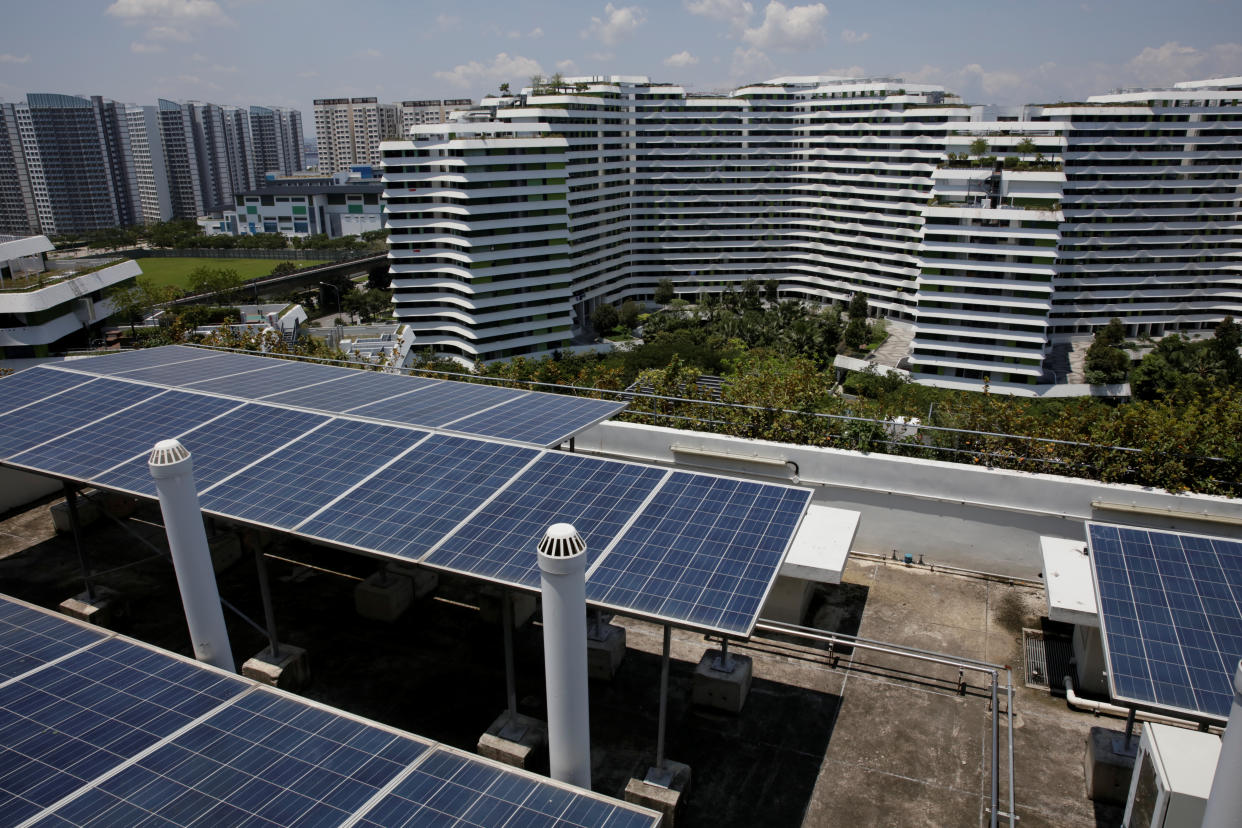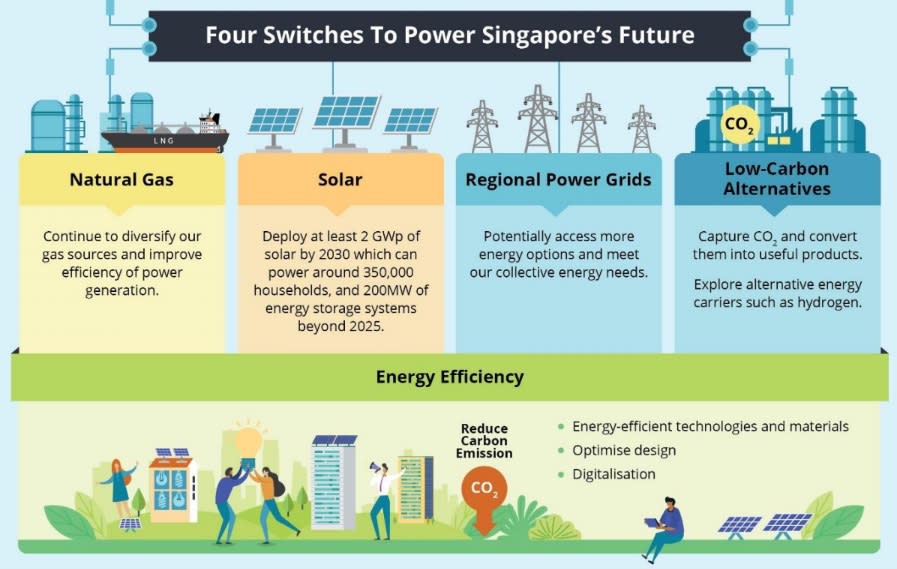Singapore takes a shine to solar power as new output target is set

UPDATE: The Public Utilities Board has awarded tender for building floating solar panel systems at two reservoirs.
SINGAPORE — Singapore will aim to produce enough solar energy to meet the annual power needs of around 350,000 households by 2030.
Minister for Trade and Industry Chan Chun Sing announced this new target at Singapore International Energy Week on Tuesday (29 October). He added that success will depend largely on how the public sector and private industries can work to bring this about, and whether technological advancements in the next 10 years can increase the efficiency of existing solar panels.
“By 2030, we aim to deploy at least a 2 gigawatt-peak of solar energy. That will be about 10 per cent of Singapore’s peak daily electricity demand today,” he said during his opening remarks at the Sands Expo and Convention Centre.
“Today, the solar panel energy collection efficiency is still pretty low. For most conventional solar panels, the efficiency is between 15 to 20 per cent. The question is, can we increase the efficiency beyond 25 per cent? If there is a breakthrough in this, then the amount of solar energy that can be collected with the same surface area will be very different.”
Using vertical surfaces for solar panels?
Chan said that, over the last 10 years, grid-connected solar installations have increased from 30 to over 3,000 in Singapore, and the country is on track to reach a target of a 350 megawatt-peak of solar energy to be deployed by next year.
However, the challenge now is to make use of vertical surfaces – such as the walls and windows of high-rise buildings – to collect solar energy.
“In Singapore, we allocate about 12 per cent of all our land area for HDB or public housing. But very few people know that in Singapore, we also allocate almost the same amount of land space for roads,” Chan said.
“What if one day, the surfaces above the roads can also help us to collect solar energy? If we can do that, we will be able to double the amount of space that we can use for solar energy collection.”
Another area for solar-energy technology development is in energy storage. Chan said that Singapore aims to deploy about 200 megawatts of energy storage solutions beyond 2025. This target will help to manage the stability and resilience of Singapore’s energy grid, as well as shave off the difference between the peak and trough within the daily energy demand cycle.
Four ‘switches’ to transform energy supply
The increasing emphasis on solar energy is one of four “switches” that Chan hopes can guide and transform Singapore’s energy supply, as the country tackles the global challenge of climate change. The other three “switches” are:
Natural Gas: About 95 per cent of Singapore's electricity is generated using natural gas, the cleanest fossil fuel today. Singapore will help natural-gas generation companies improve the efficiency of their power plants.
Regional Power Grids: Singapore will explore ways to tap on regional power grids to access energy that is cost-competitive. This could be realised through bilateral cooperation or regional initiatives.
Emerging Low-Carbon Alternatives: Singapore will look into emerging low-carbon solutions that have the potential to help reduce its carbon footprint. These could include carbon capture, utilisation or storage technologies and hydrogen.

PUB awards tender for floating solar panel systems
In a media statement released on Wednesday, the Public Utilities Board (PUB) announced that it has awarded the tender of building floating solar panel systems at two reservoirs to local construction and engineering group BBR Greentech.
The group will construct two floating solar photovoltaic systems at Bedok and Lower Seletar Reservoirs, to be run at 1.5 megawatt-peak each. The systems are expected to be ready by the second quarter of 2020.
The electricity generated by the two floating solar systems will directly power Bedok Waterworks and the raw water pumping stations at Bedok and Lower Seletar Reservoirs.
The two systems can potentially generate enough energy to power about 800 four-room HDB flats, and reduce PUB’s carbon emissions by around 1.5 kilotonnes annually – or the same as taking 300 cars off Singapore’s roads.
By the end of the year, PUB is also expected to award a tender for the deployment of a large 50 megawatt-peak floating photovoltaic system on Tengeh Reservoir by 2021.
Other Singapore stories:
Majority of Malays, Indians support affirmative action: survey
Please Stay: Bereaved Singaporean mothers launch anti-suicide initiative



